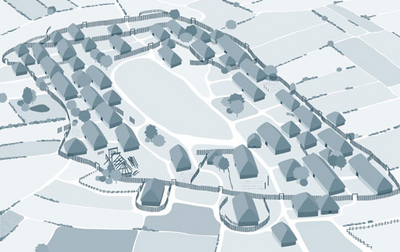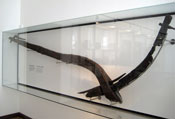Living conditions in the Iron Age
The woman from Juellinge was around 30 years old. In the Iron Age it was only the strongest who survived into adulthood and many children died during their first year. It was essential for Iron Age people to secure supplies of food for the winter. The yield from the fields and domesticated animals was small. If the harvest failed, people starved and died. The people of the Iron Age worked hard in the fields and lived in damp, smoky houses. Therefore they were physically worn out at an early age or died from illnesses. A person of 60 years of age was regarded as very old. Preserved skeletons from the period reveal that many people suffered from toothache and arthritis, as well as injuries from bone breakages.


